THE BIRTH OF SIKHISM (1469 - 1539)
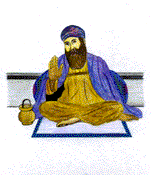
|
|
Guru Nanak Dev
|
GURU NANAK DEV (1469 - 1539)
- Born in northern India
- By the age of 15 had studied Hinduism and Islam in depth
- Fluent in Sanskrit, Persian and Arabic
- He had a vision from god; " All are equal before the one God "
- He then started preaching, universality of humankind, the abolition of the
caste system, equality and meditation on God's name
- 20 years of travelling throughout India, Persia and the Middle East
- Spoke in Punjabi (the language most recognised)
- Established LANGARS (community kitchens) to emphasise service to fellow human
beings
- Salvation available to all through moral living and devotion to God
|
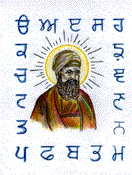
|
|
Guru Angad Dev
|
GURU ANGAD DEV (1504 -1552)
GURU 1539 - 1552
- Chosen for his humility and discipleship
- Compiled hymns and teachings in written form
- Refined and finalised Punjabi alphabet (GURMUKHI SCRIPT)
- Gave Sikhs their own written language
- Opened more LANGARS
- Introduced physical fitness
|
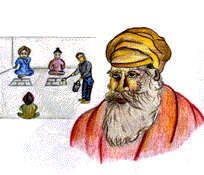
|
|
Guru Amar Das
|
GURU AMAR DAS (1479-1574)
GURU 1552 - 1574
- Developed Sikh ceremonies
- Rites of birth
- Marriage
- Death
- Furthered the equality of woman
- Fought against PURDAH (Isolation of woman) and SATI (burning of widows on their
husbands' pyres)
- Encouraged widows to remarry
|
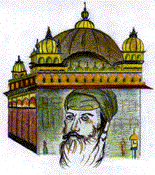
|
|
Guru Ram Dats
|
GURU RAM DATS (1534 - 1581)
GURU 1574 - 1581
- Promoted missionary activities
- Set up treasury
- Founded the SACRED SAROVAR ( " Lake of Immortality " )
|
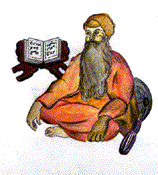
|
|
Guru Arjun Dev
|
GURU ARJUN DEV (1563 -1606)
GURU 1581 -1606
- Organised building of the HARMANDIR in Amritsar (The Golden Temple)
- Out of respect for other religions asked a Muslim to lay the foundation stone
- Contributed a large volume of hymns to the holy scriptures
- Compiled the GRANTH SAHIB (Sikh scriptures)
- Martyred in 1606 by the emperor accused of treason
|
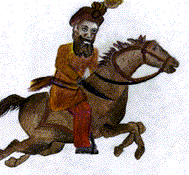
|
|
Guru Hargobind
|
GURU HARGOBIND (1595 - 1644)
GURU 1606 - 1644
- Guru at eleven years old after his father Arjun died
- Wore 2 swords, representing spiritual and secular responsibility (A Sikh Tenet)
- Introduced a Pennant which became the Sikh flag: " THE NISHAN SAHIB "
- Built AKAL TAKHT (served as a Supreme Court ) across from the Golden Temple
to guide Sikhs in temporal matters: an institution symbolising the protection of
righteousness and the duty of self defence
- Reinforced the concept of Saint-Soldier
|
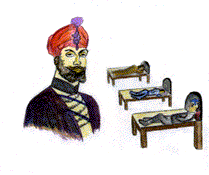
|
|
Guru Har Rai
|
GURU HAR RAI (1630 - 1661)
GURU 1644 - 1661
- Emphasised free kitchens
- Organised many religious congregations
- Started a new organisation to preach in the land
- Saved the life of the emperor's son, showing forgiveness and kindness
|

|
|
Guru Hari Krishen
|
GURU HARI KRISHEN (1656 - 1664)
GURU 1661 - 1664
- Guru at the age of 5; died at the age of 8
- Served as a model for young children
- Teachings stressed obeying and acting on the advice of parents
- Served and healed thousands of poor and those suffering with cholera
|

|
|
Guru Tegh Bahadur
|
GURU TEGH BAHADUR (1621 - 1675)
GURU 1664 - 1675
- Preached forgiveness as a virtue
- Martyred in 1675 for protecting Hindu's from religious persecution
- Taught respect for other religions
|

|
|
Guru Gobind Singh
|
GURU GOBIND SINGH (1666 - 1708)
GURU 1675 - 1708
- A scholar, poet and warrior
- Combined all qualities of his predecessors
- Wrote many hymns collected in the DASAM GRANTH (the book of the 10th Guru)
- Created the KHALSA (brotherhood of true disciples)
- Instituted the 5K's of Sikhism
- Expanded and edited THE GRANTH SAHIB
- Decreed that there would be no more Guru's after him
- Transferred his spiritual authority to the GRANTH SAHIB, which known as the
GURU GRANTH SAHIB
|
cont...